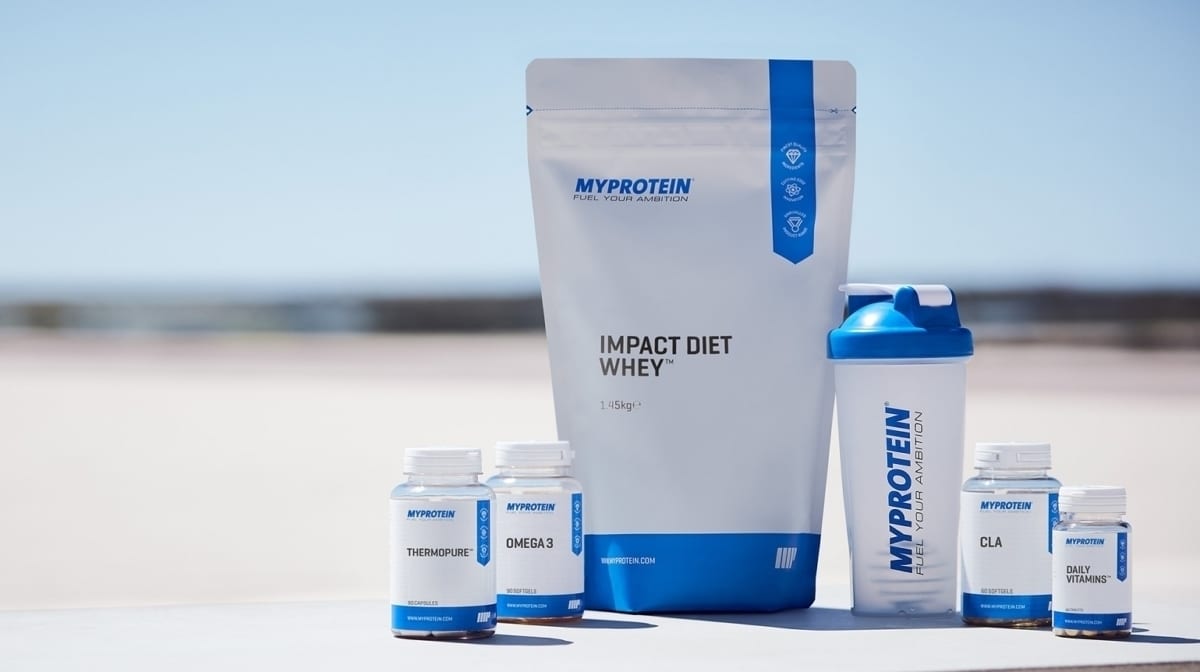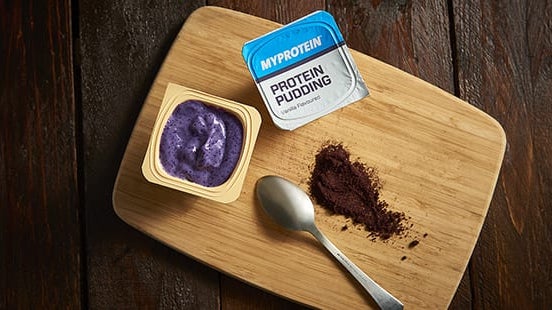SUPPLEMENTE
Nootropika: Wirken sie? Welche Nebenwirkungen gibt es?

Nootropika stellen ein Minenfeld dar. Diese Zusammensetzungen sind eine Klasse an Medikamenten, sowie Supplements, welche sowohl natürlicher, als auch pharmakologischer Herkunft sind. Diese sollen die Leistungsfähigkeit des Gehirns verbessern. Als zusammengesetzter Lehnbegriff der griechischen Wörter nous (Verstand), sowie trepein (Wendung, Richtung) sollen diese Supplemente Verbesserungen auf neurologischer Ebene bewirken.
Deshalb lehne dich zurück und lies weiter, während ich es übernehme den Nutzen dieser „smarten“ Komponent-Wirkstoffe aufzuschlüsseln.

Myprotein Autor und Experte
- Giurgea, C.E., 1982. The nootropic concept and its prospective implications. Drug Development Research, 2(5), pp.441-446.
- Giurgea C. Vers une pharmacologie de l’activité intégrative du cerveau. Tentative du concept nootrope en psychopharmacologie. [Towards an integrative pharmacology of the activity of the brain. Attempt at the nootropic concept in psychopharmacology]. Actual Pharmacol (Paris) 1972;25:115–176.
- Skondia, V., 1979. Criteria for clinical development and classification of nootropic drugs. Clinical Therapeutics, 2(5), pp.316-332.
- Waegemans T, Wilsher CR, Danniau A, Ferris SH, Kurz A, Winblad B. Clinical efficacy of piracetam in cognitive impairment: A meta-analysis. Dement Geriatr Cogn Disord 2002;13:217–224.
- Flicker L, Grimley Evans J. Piracetam for dementia or cognitive impairment (Cochrane Review). In: The Cochrane Library, Issue 2.Chichester, UK: John Wiley & Sons Ltd., 2004.
- Winblad, B., 2005. Piracetam: a review of pharmacological properties and clinical uses. CNS drug reviews, 11(2), pp.169-182.
- De Reuck, J. and Van Vleymen, B., 1999. The clinical safety of high-dose piracetam-its use in the treatment of acute stroke.Pharmacopsychiatry, 32(S 1), pp.33-37.
- Sivaramakrishna C, Rao CV, Trimurtulu G, Vanisree M, Subbaraju GV. Triterpenoid glycosides from Bacopa monnieri. Phytochemistry 2005;66:2719–2728.
- Arivazhagan P, Shila S, Kumaran S, Panneerselvam C. Effect of DL-a-lipoic acid in various brain regions of aged rats. Exp Gerontol 2002;37:803–811
- Gilgun-Sherki Y, Melamed E, Offen D. Oxidative stress induced-neurodegenerative diseases: The need for antioxidants that penetrate the blood brain barrier. Neuropharmacology 2001;40:959–975.
- Anbarasi K, Vani G, Balakrishna K, Devi CS. Effect of bacoside- A on brain antioxidant status in cigarette smoke exposed rats. Life Sci 2006;78:1378–1384.
- Jadiya P, Khan A, Sammi SR, Kaur S, Mir SS, Nazir A. Anti- Parkinsonian effects of Bacopa monnieri: Insights from transgenic and pharmacological Caenorhabditis elegans models of Parkinson’s disease. Biochem Biophys Res Commun 2011;413:605–610.
- Tortora, G. and N. Anagnostakos, Principles of Anatomy and Physiology, Third Edition (1981) Harper & Row,New York, pp. 294.
- Rastogi M, Ojha R, Prabu PC, Devi DP, Agrawal A, Dubey GP. Prevention of age-associated neurodegeneration and promotion of healthy brain ageing in female Wistar rats by long term use of bacosides. Biogerontology 2012;13:183–195
- Ahirwar S, Tembhre M, Gour S, Namdeo A. Anticholinesterase efficacy of Bacopa monnieri against the brain regions of rat. Asian J Exp Sci 2012;26:65–70.
- Das A, Shanker G, Nath C, Pal R, Singh S, Singh H. A comparative study in rodents of standardized extracts of Bacopa monniera andGinkgo biloba. Pharmacol Biochem Behav 2002;73:893–900.
- Gray NW, Brimijoin S. Amyloid-beta increases acetylcholinesterase expression in neuroblastoma cells by reducing enzyme degradation. J Neurochem 2003;86:470–478
- de la Torre J. Cerebral hemodynamics and vascular risk factors: Setting the stage for Alzheimer’s disease. J Alzheimer Dis 2012;32:553–567.
- Kamkaew N, Scholfield N, Ingkaninan K, Taepavarapruk N and Chootip K. Bacopa monnieri increases cerebral blood flow in rat independent of blood pressure. Phytother Res 2013;27:135–138.
- Saini N, Singh D, Sandhir R. Neuroprotective effects of Bacopa monnieri in experimental model of dementia. Neurochem Res 2012;37:1928–1937
- Mathew M, Subramanian M. Evaluation of the anti-amyloidogenic potential of nootropic herbal extracts in vitro. IJPSR 2012;3:4276–4280
- Holcomb LA, Dhanasekaran M, Hitt AR, Young KA, Riggs M, Manyam BV. Bacopa monniera extract reduces amyloid levels in PSAPP mice. J Alzheimer’s Dis. 2006;9:243–251.
- Pase MP, Kean J, Sarris J, Neale C, Scholey AB, Stough C. The cognitive-enhancing effects of Bacopa monnieri: A systematic review of randomized, controlled human clinical trials. J Altern Complement Med 2012;18:1–6.
- Neale C, Camfield D, Reay J, Stough C, Scholey A. Cognitive effects of two nutraceuticals Ginseng and Bacopa benchmarked against modafinil: A review and comparison of effect sizes. Br J Clin Pharmacol 2012; online publication
- Stough C, Lloyd J, Clarke J, Downey LA, Hutchison CW, Rodgers T, Nathan PJ. The chronic effects of an extract of Bacopa monniera(Brahmi) on cognitive function in healthy human subjects. Psychopharmacology 2001;156:481–484.
- Roodenrys S, Booth D, Bulzomi S, Phipps A, Micallef C, Smoker J. Chronic effects of Brahmi (Bacopa monnieri) on human memory. Neuropsychopharmacology 2002;27:279–281.
- Morgan A, Stevens J. Does Bacopa monnieriimprove memory performance in older persons? Results of a randomized, placebo-controlled, double-blind trial. J Altern Complement Med 2010;16:753–759
- Tripathi YB. Chaurasia S. Tripathi E. Upadhyay A. Dubey GP. Bacopa monniera Linn. as an antioxidant: Mechanism of action. Indian J Exp Biol. 1996;34:523–526
- Aguiar, S. and Borowski, T., 2013. Neuropharmacological review of the nootropic herb Bacopa monnieri. Rejuvenation research, 16(4), pp.313-326.
- Singh HK, Dhawan BN. Neuropsychopharmacological effects of the Ayurvedic nootropic Bacopa monniera Linn. (Brahmi). Indian J Pharmacol 1997;29:359–365.
- Blumenthal M. German Federal Institute for Drugs and Medical Devices. Commission E. The complete German Commission E monographs: therapeutic guide to herbal medicines. Austin, Tex.: American Botanical Council, 1998:11-12.
- Blumenthal M. German Federal Institute for Drugs and Medical Devices. Commission E. Herbal medicine: expanded Commission E monographs. Newton, Mass.: Integrative Medicine Communications, 2000:160-9, 479-80.
- Oberpichler H, Sauer D, Rossberg C, Mennel HD, Krieglstein J. PAF antagonist ginkgolide B reduces postischemic neuronal damage in rat brain hippocampus. J Cereb Blood Flow Metab 1990;10:133-5.
- Sastre J, Millan A, Garcia de la Asuncion J, Pla R, Juan G, Pallardo, et al. A Ginkgo biloba extract (EGb 761) prevents mitochondrial aging by protecting against oxidative stress. Free Radic Biol Med 1998;24:298-304.
- Van Beek T, Bombardelli E, Peterlongo G. Ginkgo biloba L. Fitoterapia 1998;69:195-244.
- Ahlemeyer B, Kriegelstein J. Neuroprotective effects of Ginkgo biloba extract. In: Lawson LD, Bauer R. Phytomedicines of Europe: chemistry and biological activity. Washington, D.C.: American Chemical Society, 1998:210-20.
- DeFeudis FV. Ginkgo biloba extract (EGb 761): from chemistry to the clinic. Wesbaden: Ullstein Medical, 1998.
- Watanabe CM, Wolffram S, Ader P, Rimbach G, Packer L, Maquire JJ, et al. The in vivo neuromodulatory effects of the herbal medicine gingko biloba. Proc Natl Acad Sci U S A 2001;98:6577-80.
- Kleijnen J, Knipschild P. Ginkgo biloba for cerebral insufficiency. Br J Clin Pharmacol 1992;34:352-8.
- Rogers SL, Farlow MR, Doody RS, Mohs R, Friedhoff LT. A 24-week, double-blind, placebo-controlled trial of donepezil in patients with Alzheimer’s disease. Donepezil Study Group. Neurology 1998; 50:136-45
- Wettstein A. Cholinesterase inhibitors and Ginkgo extracts — are they comparable in the treatment of dementia? Comparison of published placebo-controlled efficacy studies of at least six months’ duration. Phytomedicine 2000;6:393-401.
- Mix JA, Crews WD Jr. A double-blind, placebo-controlled, randomized trial of Ginkgo biloba extract EGb 761 in a sample of cognitively intact older adults: neuropsychological findings. Hum Psychopharmacol 2002;17:267-77.
- Solomon PR, Adams F, Silver A, Zimmer J, DeVeaux R. Ginkgo for memory enhancement: a randomized controlled trial. JAMA 2002;288:835-40.
- Birks J, Grimley E, Van Dongen M. Ginkgo biloba for cognitive impairment and dementia. Cochrane Database Syst Rev 2002; 4:CD003120.
- Engelsen J, Dalsgaard N, Winther K. The health care products Coenzyme Q10 and Ginkgo biloba do not interact with warfarin. Thromb Haemost 2001;(Supp)(Abstract No. P796).
- Ang-Lee MK, Moss J, Yuan CS. Herbal medicines and perioperative care. JAMA 2001;286:208-16.
- Sierpina VS, Wollshlaeger B, Blumenthal M. (2003). Ginkgo Biloba. Am Fam Physician;68:923-6
- Hofferberth B. The efficacy of EGb 761 in patients with senile dementia of the Alzheimer type, a double-blind, placebo-controlled study on different levels of investigation. Hum Psychopharmacol 1994;9:215-22.
- Murray MT, Pizzorno JE. Encyclopedia of natural medicine. 2d ed. Rocklin, Calif.: Prima Pub., 1998
- Mills S, Bone K. Principles and practice of phytotherapy: modern herbal medicine.Edinburgh: Churchill Livingstone, 2000
- Zhang, R.W., Tang, X.C., Han, Y.Y., Sang, G.W., Zhang, Y.D., Ma, Y.X., Zhang, C.L. and Yang, R.M., 1991. [Drug evaluation of huperzine A in the treatment of senile memory disorders]. Zhongguo yao li xue bao= Acta pharmacologica Sinica, 12(3), pp.250-252.
- Ashani, Y., Grunwald, J., Kronman, C., Velan, B. and Shafferman, A., 1994. Role of tyrosine 337 in the binding of huperzine A to the active site of human acetylcholinesterase. Molecular pharmacology, 45(3), pp.555-560.
- Raves, M.L., Harel, M., Pang, Y.P., Silman, I., Kozikowski, A.P. and Sussman, J.L., 1997. Structure of acetylcholinesterase complexed with the nootropic alkaloid,(-)-huperzine A.Nature structural biology, 4(1), pp.57-63
- Kleckner NW, Dingledine R (August 1988). “Requirement for glycine in activation of NMDA-receptors expressed in Xenopus oocytes”. Science. 241 (4867): 835–7.
- Li F, Tsien JZ (2009). “Memory and the NMDA receptors”. N. Engl. J. Med. 361 (3): 302–3.
- Ved, H.S., Koenig, M.L., Dave, J.R. and Doctor, B.P., 1997. Huperzine A, a potential therapeutic agent for dementia, reduces neuronal cell death caused by glutamate. Neuroreport, 8(4), pp.963-967.
- Xu, S.S., Gao, Z.X., Weng, Z., Du, Z.M., Xu, W.A., Yang, J.S., Zhang, M.L., Tong, Z.H., Fang, Y.S. and Chai, X.S., 1995. Efficacy of tablet huperzine-A on memory, cognition, and behavior in Alzheimer’s disease. Zhongguo yao li xue bao= Acta pharmacologica Sinica, 16(5), pp.391-395.
- Wang, B.S., Wang, H., Wei, Z.H., Song, Y.Y., Zhang, L. and Chen, H.Z., 2009. Efficacy and safety of natural acetylcholinesterase inhibitor huperzine A in the treatment of Alzheimer’s disease: an updated meta-analysis. Journal of neural transmission, 116(4), pp.457-465
- Zhang, R.W., Tang, X.C., Han, Y.Y., Sang, G.W., Zhang, Y.D., Ma, Y.X., Zhang, C.L. and Yang, R.M., 1991. [Drug evaluation of huperzine A in the treatment of senile memory disorders]. Zhongguo yao li xue bao= Acta pharmacologica Sinica, 12(3), pp.250-252.
- Kiss, B. and Karpati, E., 1996. [Mechanism of action of vinpocetine]. Acta Pharmaceutica Hungarica, 66(5), pp.213-224.
- Kakihana, M., Fukuda, N., Suno, M. and Nagaoka, A., 1988. Effects of CDP-choline on neurologic deficits and cerebral glucose metabolism in a rat model of cerebral ischemia. Stroke, 19(2), pp.217-222.
- Gaál, L. and Molnár, P., 1990. Effect of vinpocetine on noradrenergic neurons in rat locus coeruleus. European journal of pharmacology, 187(3), pp.537-539.
- Ishihara, K., Katsuki, H., Sugimura, M. and Satoh, M., 1989. Idebenone and vinpocetine augment long-term potentiation in hippocampal slices in the guinea pig. Neuropharmacology, 28(6), pp.569-573.
- Pepeu, G. and Spignoli, G., 1989. Nootropic drugs and brain cholinergic mechanisms.Progress in Neuro-Psychopharmacology and Biological Psychiatry, 13, pp.S77-S88.
- Bhatti, J.Z. and Hindmarch, I., 1987. Vinpocetine effects on cognitive impairments produced by flunitrazepam. International clinical psychopharmacology, 2(4), pp.325-331.
- Subhan, Z. and Hindmarch, I., 1985. Psychopharmacological effects of vinpocetine in normal healthy volunteers. European journal of clinical pharmacology, 28(5), pp.567-571.
- Miskolczi, P., Kozma, K., Polgar, M. and Vereczkey, L., 1990. Pharmacokinetics of vinpocetine and its main metabolite apovincaminic acid before and after the chronic oral administration of vinpocetine to humans.European journal of drug metabolism and pharmacokinetics, 15(1), pp.1-5.
- Balestreri, R., Fontana, L. and Astengo, F., 1987. A Double‐Blind Placebo Controlled Evaluation of the Safety and Efficacy of Vinpocetine in the Treatment of Patients with Chronic Vascular Senile Cerebral Dysfunction.Journal of the American Geriatrics Society, 35(5), pp.425-430.
- Murray M, Pizzorno J. Encyclopedia of Natural Medicine. Rocklin, CA: Prima Publishing; 1998:230.
- Spagnoli A, Lucca U, Menasce G, et al. Long-term acetyl-l-carnitine treatment in Alzheimer s disease. Neurology 1991;41:1726-1732.
- Furlong JH. Acetyl-L-carnitine: metabolism and applications in clinical practice. Altern Med Rev 1996;1:85-93.
- Purpura DP, Girado M, Smith TG, et al. Structure-activity determinants of pharmacological effects of amino acids and related compounds on central synapses. J Neurochem 1959;3:238-268.
- Hayashi K. Action of carnitine on excitable tissues of vertebrates. In: Peeters H, ed. Protides of the Biological Fluids. Amsterdam, Netherlands: Elsevier; 1960:371-381.
- Perez Polo JR, Werrbach-Perez K, Ramacci MT, et al. Role of nerve growth factors in neurologicaldisease. In: Agnoli A, Cahn J, Lassen N, et al, eds. Senile Dementias. 2nd International Symposium.Paris, France: Libby; 1988:15-25.
- Zanelli SA, Solenski NJ, Rosenthal RE, Fiskum G. Mechanisms of ischemic neuroprotection by acetyl-l-carnitine. Ann N Y Acad Sci 2005;1053:153-161.
- Bagetta V, Barone I, Ghiglieri V, et al. Acetyl-L-carnitine selectively prevents post-ischemic LTP via a possible action on mitochondrial energy metabolism. Neuropharmacology 2008;55:223-229
- Rai G, Wright G, Scott L, et al. Doubleblind, placebo controlled study of acetyl-l-carnitine in patients with Alzheimer s dementia. Curr Med Res Opin 1990;11:638-647.
- Bonavita E. Study of the efficacy and tolerability of L-acetylcarnitine therapy in the senile brain. Int J Clin Pharmacol Ther Toxicol 1986;24:511-516.
- Sano M, Bell K, Cote L, et al. Doubleblind parallel design pilot study of acetyl levocarnitine in patients with Alzheimer s disease. Arch Neurol 1992;49:1137-1141.
- Thal LJ, Calvani M, Amato A, Carta A. A 1-year controlled trial of acetyl-l-carnitine in early-onset AD. Neurology 2000;55:805-810.
- Montgomery SA, Thal LJ, Amrein R. Meta-analysis of double blind randomized controlled clinical trials of acetyl-l-carnitine versus placebo in the treatment of mild cognitive impairment and mild Alzheimer s disease. Int Clin Psychopharmacol 2003;18:61-71.
- Tempesta E, Casella L, Pirrongelli C, et al. L-acetylcarnitine in depressed elderly subjects. A cross-over study vs placebo. Drugs Exp Clin Res 1987;13:417-423.
- Garzya G, Corallo D, Fiore A, et al. Evaluation of the effects of L-acetylcarnitine on senile patients suffering from depression. Drugs Exp Clin Res 1990;16:101-106.







